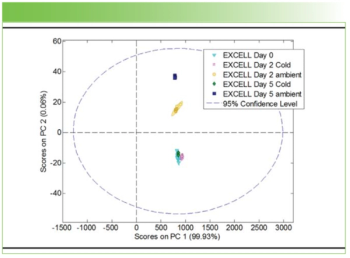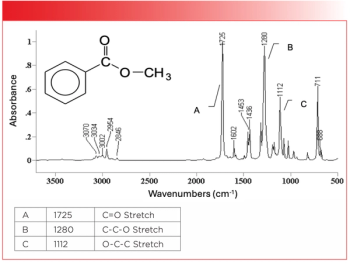
Best of the Week: Lithium-Ion Battery Analysis, Reviving Retired Spectrometers, Preserving Wetlands
Top articles published this week include a review of lithium-ion batteries, a news article about portable near-infrared (NIR) spectroscopy, and a look at using imaging techniques to preserve the wetlands.
This week, Spectroscopy published various articles that covered many topics in analytical spectroscopy. This week’s articles touch upon several important application areas such as environmental analysis and biological imaging, and several key techniques are highlighted, including near-infrared (NIR) spectroscopy and artificial intelligence (AI). Below, we’ve highlighted some of the most popular articles, according to our readers and subscribers. Happy reading!
Lithium-ion batteries (LIBs) power consumer electronics, electric vehicles, and renewable energy systems, requiring advanced analytical methods for performance, safety, and lifespan improvements. Spectroscopic techniques are crucial in LIB research, manufacturing, quality control, safety testing, and recycling (1). Common methods include inductively coupled plasma–mass spectrometry (ICP-MS), ICP-optical emission spectroscopy (ICP-OES), Raman, X-ray fluorescence (XRF), XPS, FT-IR, NIR, ultraviolet–visible (UV-vis), fluorescence, and nuclear magnetic resonance (NMR) spectroscopy (1). These tools analyze the structural, compositional, and electrochemical properties of LIB materials, aiding advancements in battery technology (1). This review highlights the role of spectroscopic methods in LIB characterization, emphasizing their importance in optimizing battery performance, ensuring safety, and extending product lifespan.
Kelulut honey, valued for its health benefits, is often adulterated with substances like rice syrup. This study utilized near-infrared (NIR) spectroscopy to detect varying levels of rice syrup adulteration in Kelulut honey. Tests revealed that adulteration reduced moisture content, electrical conductivity, water activity, hydroxy methyl furfural (HMF) content, and honey color, though pH remained unaffected (2). Principal component regression (PCR) emerged as a more accurate predictive model (R² = 0.914) than partial least squares (PLS) (2). The findings demonstrate NIR spectroscopy's potential as a rapid, non-destructive method for detecting honey adulteration, supporting quality assurance in the honey market.
Smaller laboratories often face financial challenges in acquiring modern analytical equipment, relying instead on older instruments requiring frequent maintenance. In a study published in the Journal of Chemical Education, Ken Overway of Bridgewater College demonstrates how decommissioned optical spectrometers can be repurposed as educational tools for students (3). This approach allows hands-on learning about instrument components and functionality, bridging gaps in practical knowledge while promoting sustainability by reducing equipment waste (3). Students gain valuable skills in operating, troubleshooting, and maintaining spectrometers, preparing them for future careers. Overway’s cost-effective experiment is replicable across resource-limited institutions, extending the value of retired equipment (3).
Climate change results from long-term shifts in weather patterns, significantly influenced by human activities like burning fossil fuels. Global efforts, such as the Paris Climate Accords, aim to limit temperature increases and reduce greenhouse gas emissions through nationally determined contributions (NDCs). Wetland ecosystems play a crucial role as carbon sinks, regulating climate and supporting biodiversity (4). A recent review in Remote Sensing of Environment highlights the potential of imaging spectroscopy for managing these ecosystems by improving carbon budget assessments, detecting habitat changes, and measuring environmental parameters (4). Despite its promise, accessibility challenges hinder its application, emphasizing the need for interdisciplinary collaboration and investment.
Over the past two years, Spectroscopy has expanded its coverage of artificial intelligence (AI), deep learning (DL), and machine learning (ML). This overview highlights key resources, including articles, podcasts, and columns, focusing on AI applications in spectroscopy (5). Featured content includes Analytically Speaking podcasts, the Chemometrics in Spectroscopy column, and selected news and feature articles. Active links to these resources on the Spectroscopy website are provided, offering a comprehensive guide to their AI-related content (5).
References
- Workman, Jr., J. A Comprehensive Review of Spectroscopic Techniques for Lithium-Ion Battery Analysis. Spectroscopy Suppl. 2024, 39 (s11), 6–16.
- Ying, L. L.; Saleena, L. A. K.; Solihin, M. I.; Phing, P. L. Physicochemical Analysis and Detection of Rice Syrup Adulteration in Kelulut Honey Using Portable Near-Infrared Spectroscopy. Spectroscopy Suppl. 2024, ASAP.
https://www.spectroscopyonline.com/view/physicochemical-analysis-and-detection-of-rice-syrup-adulteration-in-kelulut-honey-using-portable-near-infrared-spectroscopy - Wetzel, W. Reviving Retired Spectrometers: A Novel Educational Approach for Chemistry Students. Spectroscopy. Available at:
https://www.spectroscopyonline.com/view/reviving-retired-spectrometers-a-novel-educational-approach-for-chemistry-students (accessed 2024-12-04). - Wetzel, W. The Role of Imaging in Preserving Wetlands. Spectroscopy. Available at:
https://www.spectroscopyonline.com/view/the-role-of-imaging-in-preserving-wetlands (accessed 2024-12-04). - Workman, Jr., J. AI, Deep Learning, and Machine Learning in the Dynamic World of Spectroscopy. Spectroscopy. Available at:
https://www.spectroscopyonline.com/view/ai-deep-learning-and-machine-learning-in-the-dynamic-world-of-spectroscopy (accessed 2024-12-04).
Newsletter
Get essential updates on the latest spectroscopy technologies, regulatory standards, and best practices—subscribe today to Spectroscopy.





